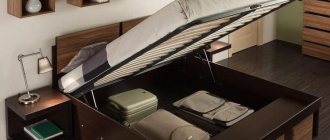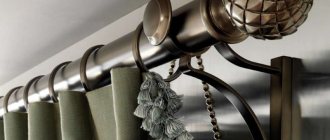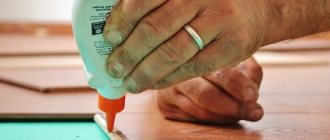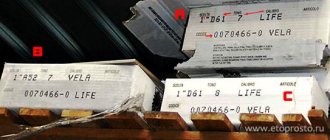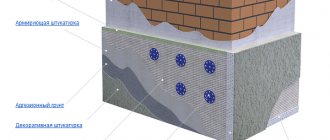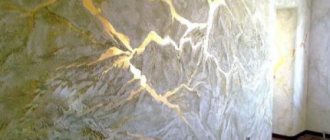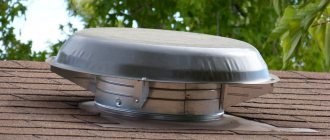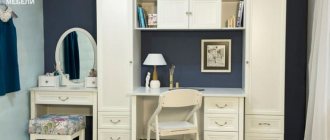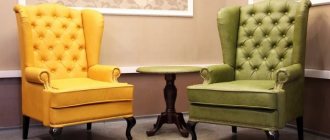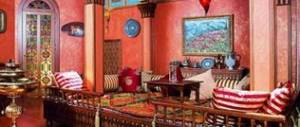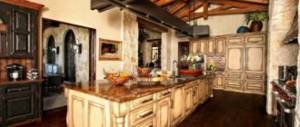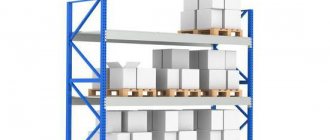A furniture corner is a hidden element, with the help of which the elements of the sets are tied together. It is used in the assembly of both cabinet and soft products. This fastener is made of metal or plastic. The special design implies exposure to increased loads. Metal furniture corners are widely used, and the elements themselves may vary, so you need to be careful when choosing.
What is a furniture corner
This is the name of a special type of fastener suitable for all furniture assembly operations. When manufacturing corners, all technical requirements are taken into account: despite their structural simplicity, the products are able to withstand significant operating loads. They come in several types, with different designs and areas of application.
This type of fastener is reliable and affordable. For built-in furniture it serves as the main connection, which can safely be called universal. The only thing is that after installation work it remains clearly visible and does not always have an attractive appearance.
Visually, plastic products look better, but they can withstand less load. To install them, you do not need to make any additional holes. Installation work is carried out using self-tapping screws.
The corners are characterized by the simplest possible design. This is a bent metal plate, where the bend point is called an edge, and the edges are called flanges. Products may have an unusual color or shape. With their help, internal connections are made or they are used as decorative fittings.
There are several types of corners that are installed using nails, screws or Euroscrews.
What is it needed for
In furniture production, there are many fasteners that differ in shape, size and other parameters. A furniture corner is a basic piece of furniture in the form of a consumable material. A high-quality corner provides a tie between two flat pieces of furniture, and they can be made of two different materials, for example, wood or metal. To connect to glass you will need a special pad.
Where they are used:
- create a tight internal connection of structural parts from the same or different materials;
- act as a decorative element;
- serve as decoration for various shelves and racks, as well as all kinds of drawers;
- Thanks to the protective properties of this element, the fastenings remain reliable for a long time.
Furniture mounting brackets are suitable for cabinet and modular structures.
Specifications
Metal fastening corners for furniture, which are made of aluminum or steel, are in great demand. They are coated on top with zinc, which is necessary for protection against corrosion. If such a screed is in normal conditions, that is, it is not affected by negative factors, then it will serve for many years without changing its performance properties.
Dimensions and other parameters of fittings are taken into account depending on the material used and design features. Each type of fastener can only withstand a certain load and weight. It has 2 symmetrical holes on both sides, which prevents skewing.
A decorative corner for furniture can be used by both professionals and beginners when creating various designs.
Product Features:
- Versatility. Suitable for various connections. There is no need to drill holes during installation, so the front of the panels remains intact.
- High connection reliability. With their help, various structures are assembled, and shelves or other products are attached on which heavy objects will stand. We should also highlight the reinforced furniture version, which has a special coating that protects against corrosion and at the same time can withstand significant loads.
- A large assortment. The components differ in shapes, colors, and the presence of a decorative cover. This allows you to choose the best option that suits all the parameters of the interior of the room.
Thus, this is a universal and popular design that has many advantages. It can be used for different fastening areas.
Furniture fasteners
Furniture fasteners are hardware (metal products) that are used to connect parts. Most often, connections are made at right angles.
- Wooden dowels - inserted into pre-drilled holes in both parts. They are used for preliminary fixation and increasing the shear load, then the parts are fixed in a more reliable way.
- Furniture corners are a popular, but outdated type of furniture fastening. Among the disadvantages: appearance, loosening over time and bulkiness.
- Euroscrew (confirmed) – furniture screw. This is the main fastener for parts in modern furniture. Furniture makers almost never use ordinary self-tapping screws. Confirmats have a larger thread, so they stay inside the chipboard much better.
The holes for them can be drilled directly on site.
To do this, use a special drill that makes a hole with different diameters for the thread, neck and head of the Euroscrew. The most commonly used confirmats are 7*50 mm. When drilling, special attention should be paid to the perpendicularity of the drilling, so as not to spoil the coating of the part with a through hole. Furniture screws are tightened with a hex key or a screwdriver attachment. The caps for a Phillips screwdriver cannot be tightened tightly until the end.The main disadvantage of this type of fastening is that screwed-in caps remain visible. To hide them, use plastic plugs matching the color of the chipboard.
- Eccentric ties are a modern and correct method of fastening.
It leaves a hole only on the inside of the product, but requires very precise drilling. To obtain the required holes, use a Forstner drill. There's not much point in going to the trouble of using them to assemble items that will be hidden, but they work well for attaching drawer doors.
Furniture corner
Types of corners depending on size and purpose
At the moment, there is a wide variety of dimensions of this furniture fittings. When choosing a specific size, you need to take into account the expected loads and the materials from which the connected elements are made. The dimensions of the corner depend on its purpose.
Main types:
- For light connections. The products have a thickness of 2 mm and dimensions: 40 × 40 × 20 mm. This type of screed is relevant for installing small shelves and similar structures that will not be loaded with heavy objects.
- For corner connections of heavy beams. Installed in both horizontal and vertical planes. Dimensions range from 40 x 40 x 60 to 100 x 100 x 100 mm.
- Perforated. Special holes allow them to be installed using durable hex bolts. Such products are used to fasten really heavy structures.
- Reinforced. They are used by qualified workers in the construction industry.
- With lock nut. These are reinforced and perforated modifications.
Each fastener has its own purpose. There is no point in using reinforced parts to install a regular shelf, since the costs will be inappropriate, because there will be no benefits from this.
Dowels for hollow and sheet materials
- Name
- Name
- Price
- Price
- Reset
Sort by:
Sort by:
View:
Advantages:
- Unique anchor opening and can be used in all base materials
- Various types of screws can be used
Applications:
- Fastening in hollow materials with low strength, standard wood screws are suitable
- Installation in hollow bricks and blocks, plasterboard and concrete
Specifications:
- Anchor type: Plastic anchor
- Mounting method: Pre-mounted, Through-mounted
- Base materials: Concrete (without cracks), Drywall, Hollow brick
- Drill diameter: 10 mm
- Anchor length: 28 mm
- Attachment method (AS): Pre-attached, Through-mounted
- Material: Polyamide PA 6
Advantages:
- Shark tooth design for precise positioning and quick installation
- Self-tapping
- Available with or without #8 x 1-3/16″ screw
Applications:
- Water pipes
- Interior finishing work
- Electrical installation
Specifications:
- Head Type: Internal Thread
- Environmental conditions: Indoor, dry conditions
- Material: Zinc, casting
- Mounting method: Pre-mounted
- Installation direction: All
Used for fastening to plasterboard sheets, installed without pre-drilling. After installation, the material is secured with a screw. The design of the dowel is such that after installation it does not create bursting forces in the gypsum board and prevents spontaneous unscrewing of the dowel. Dowel diameter: 14 mm, Dowel length: 23 mm
Self-tapping fasteners for plasterboard walls. APPLICATION: Photographs; Paintings; Lamps; Hangers; Electrical installation. FEATURES: Self-tapping nylon anchor for standard and double plasterboard walls. The fastest way to secure light objects. No special tool needed, just a PZ2 screwdriver. Install flush with the surface of the sheet, do not overtighten. Equipped with galvanized screw 4.5 x 35 mm. Can also be used with other suitable wood and chipboard screws, self-tapping screws and hook and loop screws. Conditions of use are related to the material of the screw: galvanized - for dry rooms and temporary fastenings outdoors; hot-dip galvanized/MG and A2 - for dry and damp rooms, outdoors only in rural areas; A4 - indoors, outdoors and in an industrial area. BASE MATERIAL: Plasterboard sheet. SUITABLE CONDITIONS: Dry premises. CHARACTERISTICS: Nylon fastener for sheet materials.
Self-tapping metal fasteners for plasterboard walls. APPLICATION: Photographs; Paintings; Lamps; Hangers; Electrical installation. FEATURES: Fire-resistant self-tapping anchor for walls made of standard, double and composite plasterboard and MDF. Drill an 8mm hole for mounting into MDF and double plasterboard. The fastest way to secure light objects. No special tool needed, just a PZ2 screwdriver. Install flush with the surface of the sheet, do not overtighten. Equipped with galvanized screw 4.5 x 35 mm. Can also be used with other suitable wood and chipboard screws, self-tapping screws and hook and loop screws. Galvanized - for dry rooms and temporary outdoor installations. BASE MATERIAL: Plasterboard sheet, plasterboard composite sheet. SUITABLE CONDITIONS: Dry premises. CHARACTERISTICS: Metal fastening element for sheet materials.
All metal Molly for strong anchorage in sheet and cavity walls. APPLICATION: Wall cabinets; Shelves; Bookshelves; TV consoles; Radiators; Sinks. FEATURES: All metal Molly anchor with elements that open from the back of the sheet for a strong attachment. MOLA is suitable for heavier fastenings, depending on the characteristics of the sheet material. Suitable for sheets 6-26mm thick, requires a cavity behind the sheet. Insulating material may complicate installation. Fire resistance. The fastening can be partially dismantled or corrected by unscrewing the screw. Tighten the anchor using a screwdriver or special MOLA installation pliers. Galvanized for use in dry areas or temporary outdoor installations. BASE MATERIAL: Plasterboard sheet, Composite plasterboard sheet, Wood-based building boards. SUITABLE CONDITIONS: Dry premises.
All metal Molly for strong anchorage in sheet and cavity walls. APPLICATION: Wall cabinets; Shelves; Bookshelves; TV consoles; Radiators; Sinks. FEATURES: All metal Molly anchor with elements that open from the back of the sheet for a strong attachment. MOLA is suitable for heavier fastenings, depending on the characteristics of the sheet material. Suitable for sheets 6-26mm thick, requires a cavity behind the sheet. Insulating material may complicate installation. Fire resistance. The fastening can be partially dismantled or corrected by unscrewing the screw. Tighten the anchor using a screwdriver or special MOLA installation pliers. Galvanized for use in dry areas or temporary outdoor installations. BASE MATERIAL: Plasterboard sheet, Composite plasterboard sheet, Wood-based building boards. SUITABLE CONDITIONS: Dry premises.
Dowel for all types of materials with increased strength and service life. APPLICATIONS: wall cabinets, ceiling lights, shelves, bookshelves, TV consoles, radiators, sinks, urinals, electrical installation, ventilation, air conditioning and plumbing fixtures, plumbing. fastenings FEATURES High quality anchor made from DuPont™ Hytrel® for pre-installation into sheet, hollow and solid walls, in any type of building materials. Gripper withstands long-term stress, wear, weather, humidity and storage better than regular dowels. An invisible flange hidden under the screw head holds the dowel at the optimal depth. Can be used with most common types of screws of different diameters. Conditions of use are related to the material of the screw: galvanized - for dry rooms and temporary fastenings outdoors; hot-dip galvanized/MG and A2 - for dry and damp rooms, outdoors only in rural areas; A4 - indoors, outdoors and in an industrial area. BASE MATERIAL: solid porous concrete block, plasterboard sheet, plasterboard composite sheet, hollow lightweight expanded clay, hollow slab, lightweight expanded clay, natural stone, compressed concrete area, hollow clay brick, hollow silicate brick, solid clay brick, solid lightweight expanded clay, solid silicate brick. SUITABLE CONDITIONS: Dry indoors, wet indoors, rural outdoors, outdoors.
TOLA Toggle fastenings for hollow walls. APPLICATION: Electrical installation; Ventilation, air conditioning and plumbing fixtures; Plumber fastenings; Wall cabinets; Shelves; Bookshelves; TV consoles; Radiators; Sinks. FEATURES: The Toggle-type metal anchor opens inside the cavity and is pressed against the back of the sheet. Suitable for lightweight ceiling installations. TOLA is designed for a wide load distribution and is therefore suitable for heavier fastenings (hardware) depending on the characteristics of the sheet material. Designed for sheets with a thickness of 10-70 mm, and requires a cavity of at least 50 mm behind the sheet. Insulating material may complicate installation. Use when fire resistance is required. Galvanized for use in dry areas or temporary outdoor installations. BASE MATERIAL: Plasterboard sheet, Composite plasterboard sheet, Hollow core board, Wood-based building boards. SUITABLE CONDITIONS: Dry premises. CHARACTERISTICS: Fastening for hollow walls.
Self-tapping metal fasteners for plasterboard walls. APPLICATION: Photographs; Paintings; Lamps; Hangers; Electrical installation. FEATURES: Fire-resistant self-tapping anchor for walls made of standard, double and composite plasterboard and MDF. Drill an 8mm hole for mounting into MDF and double plasterboard. The fastest way to secure light objects. No special tool needed, just a PZ2 screwdriver. Install flush with the surface of the sheet, do not overtighten. Equipped with galvanized screw 4.5 x 35 mm. Can also be used with other suitable wood and chipboard screws, self-tapping screws and hook and loop screws. Galvanized - for dry rooms and temporary outdoor installations. BASE MATERIAL: Plasterboard sheet, plasterboard composite sheet. SUITABLE CONDITIONS: Dry premises. CHARACTERISTICS: Metal fastening element for sheet materials.
Self-tapping metal fastening for plasterboard walls. APPLICATION: Photographs; Paintings; Lamps; Hangers; Electrical installation. FEATURES: Fire-resistant self-tapping anchor for walls made of standard, double and composite plasterboard and MDF. Drill an 8mm hole for mounting into MDF and double plasterboard. The fastest way to secure light objects. No special tool needed, just a PZ2 screwdriver. Install flush with the surface of the sheet, do not overtighten. Equipped with galvanized screw 4.5 x 50 mm. Can also be used with other suitable wood and chipboard screws, self-tapping screws and hook and loop screws. Galvanized - for dry rooms and temporary outdoor installations. BASE MATERIAL: Plasterboard sheet, plasterboard composite sheet. SUITABLE CONDITIONS: Dry premises.
Tested anchor for hollow walls made of various sheet materials of different thicknesses. APPLICATION: Shelves; Bookshelves; Brackets; Lamps; Electrical installation; Ventilation, air conditioning and plumbing fixtures. FEATURES: Anchor for hollow walls with elements that open from the back of the sheet. Made from durable thermoplastic elastomer. Suitable for 12mm thick sheets, requires a cavity behind the sheet. Thermal insulation can complicate installation. Also works in solid materials. The material allows OLA to withstand long-term stress, wear, weather, humidity and storage better than conventional wall anchors. Equipped with 4 x 60 mm screw. The conditions of use are related to the material of the screw: galvanized - for dry rooms and temporary fastenings outdoors. BASE MATERIAL: Gypsum board, plasterboard, composite, wood-based building boards SUITABLE CONDITIONS: Dry premises.
Self-tapping fasteners for plasterboard walls. APPLICATION: Photographs; Paintings; Lamps; Hangers; Electrical installation. FEATURES: Self-tapping nylon anchor for standard and double plasterboard walls. The fastest way to secure light objects. No special tool needed, just a PZ2 screwdriver. Install flush with the surface of the sheet, do not overtighten. Equipped with galvanized screw 4.5 x 35 mm. Can also be used with other suitable wood and chipboard screws, self-tapping screws and hook and loop screws. Conditions of use are related to the material of the screw: galvanized - for dry rooms and temporary fastenings outdoors; hot-dip galvanized/MG and A2 - for dry and damp rooms, outdoors only in rural areas; A4 - indoors, outdoors and in an industrial area. BASE MATERIAL: Plasterboard sheet. SUITABLE CONDITIONS: Dry premises. CHARACTERISTICS: Nylon fastener for sheet materials.
The FISCHER DUOBLADE S self-tapping nylon dowel with metal tip and screw is suitable for pre-assembly.
FISCHER DUOBLADE S is suitable for plasterboard and gypsum fiber boards, wood, sheet materials, chipboard screws with a diameter of 4 to 5 mm, as well as for various hooks and eyebolts.
The black metal tip ensures safe installation. High tightening torque improves and optimizes the quality of dowel installation. The design of the dowel prevents it from unscrewing spontaneously. Phillips slot - Pozidriv (PZ).
Applicable: Smoke detectors; Mirrors; Cornices; Blinds; Lamps; Paintings.
The FISCHER DUOBLADE self-tapping nylon dowel with metal end is suitable for pre-assembly.
FISCHER DUOBLADE is suitable for plasterboard and gypsum fiber boards, wood, sheet materials, chipboard screws with a diameter of 4 to 5 mm, as well as for various hooks and eyebolts.
The black metal tip ensures safe installation. High tightening torque improves and optimizes the quality of dowel installation. The design of the dowel prevents it from unscrewing spontaneously. Phillips slot - Pozidriv (PZ).
Applicable: Smoke detectors; Mirrors; Cornices; Blinds; Lamps; Paintings.
Used for fastening to plasterboard sheets, installed with pre-drilling. After installation, the material is secured with a screw. The design of the dowel is such that after installation it does not create bursting forces in the gypsum board and prevents spontaneous unscrewing of the dowel. Dowel diameter: 14 mm, Dowel length: 23 mm
Used for fastening to plasterboard sheets, installed without pre-drilling. After installation, the material is secured with a screw. The design of the dowel is such that after installation it does not create bursting forces in the gypsum board and prevents spontaneous unscrewing of the dowel.
The metal dowel with drill for drywall is made of galvanized steel. Phillips 2 slot. Purpose: Used for quick installation into a plasterboard wall, screwed in without pre-drilling. The design of the dowel prevents it from unscrewing spontaneously and ensures fastening without straining. After installation, the material is attached to it using a screw. If necessary, it can be turned out of the wall. Recommendations for use: It is recommended to use a screwdriver for installation.
The dowel is made of polypropylene, and the screw is made of passivated steel, the screw has a Phillips2 cross-head slot. Purpose: A butterfly dowel with a screw is intended for fastening lightweight elements in hollow structures. Used for fastening to plasterboard sheets. Thanks to the special design, the dowel is blocked already at the moment of deposition. Complete blocking of the dowel is achieved by tightening it with a screw. Recommendations for use: It is recommended to install at temperatures from -10 to +40°C.
The FISCHER KD spring dowel is used for mounting a wide variety of objects, such as paintings, mirror cabinets, light shelves and cabinets, lamps, towel holders, washbasins and urinals.
The FISCHER GKM metal dowel with a countersunk screw is used to create a reliable and long-term fastening in hollow and solid plasterboard bases.
Metal dowel FISCHER GKM is used to create reliable and long-term fastening in hollow and solid plasterboard bases.
Metal dowel FISCHER GKM with a screw with a flat-rounded head is used to create reliable and long-term fastening in hollow and solid plasterboard bases.
Designed for attaching lamps, shelves, baseboards, switches, cable ducts, etc. to plasterboard, gypsum fiber board, chipboard and other materials (10-12 mm thick). Material: frost-resistant polypropylene. Installation procedure 1. Drill a hole of the required diameter. 2. A dowel is inserted into the hole. 3. A mounting part with a pre-drilled hole is applied to the wall. 4. The part is installed using a screw.
Purpose: Drive-in dowel WALRAVEN BIS XL for cardboard + TF self-tapping screw - drive-in dowel for medium loads. Designed for installation of pipes, radiators, heating devices, air conditioners. Suitable for self-tapping screws (diameter 4.0 - 5.0 mm, minimum length 45 mm). Installation in double-layer plasterboard
Installation: Sharp tip for precise driving into the marking area, without pre-drilling. The side does not allow you to fall into the drywall. Precise direction and centering when screwing in the self-tapping screw. When screwing in the self-tapping screw, the dowel becomes wedged and does not rotate in the wall. Dismantling with minor damage to the wall. Safety factor BIS XL 1:2.
Material: Steel, electrolytic galvanization. Fire resistance is higher than that of plastic dowels.
Combine with BIS starQuick® Clamps - grey.
Purpose: Drive-in dowel WALRAVEN BIS GOLD for cardboard + TF self-tapping screw - drive-in dowel with centric internal thread for small and medium loads. It is used when working with sheet materials, especially plasterboard. Suitable for self-tapping screws (diameter 3.5 - 5.0 mm, minimum length 30 mm).
Installation: Sharp tip for precise driving into the marking area, without pre-drilling. The side does not allow you to fall into the drywall. Precise direction and centering when screwing in the self-tapping screw. When screwing in the self-tapping screw, the dowel becomes wedged and does not rotate in the wall. Dismantling with minor damage to the wall. BIS GOLD safety factor 1:2.
Material: Steel, surface treatment: galvanized and color passivated. Fire resistance is higher than that of plastic dowels.
Combine with BIS starQuick® Clamps - grey.
The FISCHER GK plasterboard dowel is suitable for pre-installation. The sharp self-tapping thread edges of the GK dowel ensure a secure, tight fit of the dowel. Made from at least 50% renewable materials for minimal environmental impact.
The FISCHER GK S dowel with plasterboard screw is suitable for pre-installation. The sharp self-tapping thread edges of the GK dowel ensure a secure, tight fit of the dowel. Made from at least 50% renewable materials for minimal environmental impact.
Universal metal dowel FISCHER HM S for installation in hollow materials with metric screw
The metal dowel FISCHER HM SS with a hexagonal bolt is used for mounting various objects to plasterboard and plywood bases.
Metal dowel with hook FISCHER HM H is used for hanging and fixing various objects, for example, pictures, lamps, shelves, towel holders, mirror cabinets, curtain rods, TV brackets.
The FISCHER KDH spring anchor is used for mounting a wide variety of objects, such as pictures, mirror cabinets, light shelves and cabinets, lamps, towel holders, washbasins and urinals.
The FISCHER KD spring dowel is used for mounting a wide variety of objects, such as pictures, mirror cabinets, light shelves and cabinets, lamps, towel holders, washbasins and urinals.
The FISCHER KDH spring anchor is used for mounting a wide variety of objects, such as pictures, mirror cabinets, light shelves and cabinets, lamps, towel holders, washbasins and urinals.
The FISCHER KM spring dowel is used for mounting a wide variety of objects, such as pictures, mirror cabinets, light shelves and cabinets, lamps, towel holders, washbasins and urinals.
Product
price, rub.
Qty
Buy
- 1
| HELPFUL INFORMATION |
DOCULS FOR HOLLOW AND SHEET MATERIALS A special group of fastening devices is used for fastening building materials to bases characterized by low load-bearing capacity due to the presence of voids in the structure of the material or small transverse size. • Types of dowels for hollow and sheet materials are differentiated by the method of fastening the elements, the material of manufacture, the functionality of use, and the presence of self-tapping screws or self-tapping screws in the kit. Form anchoring is created by rotating the dowel and deforming the petals, resulting in a knot larger than the entry hole. Anchoring with a folding or spring folding element is created due to the large area of contact with the base material. Folding elements Before installation, folding elements are pressed against the dowel rod; after installation, they take their original position and ensure fixation of the dowel, forming a large stop area. The materials for making dowels are modern composites made of steel or polymer plastics. To improve the physical and chemical properties, the starting materials are alloyed, reinforced, and protective coatings are applied. • Application Through or preliminary fixation, fastening, any types of installation on surfaces made of porous and hollow materials, or sheet materials of small thickness. General construction and finishing works, repairs and improvement of premises, production of furniture, mounting of removable and non-removable attached technical equipment, various utilities. They are widely used in everyday life for hanging shelves, lamps, paintings, photographs, mirrors, and installing brackets. • Selection criteria Each specific dowel is accompanied by an individual description of technical and physico-chemical characteristics. To achieve the required quality of the created structure, it is necessary to take into account the product’s own characteristics and the operating conditions of the fasteners. - room humidity, temperature difference, presence of electromagnetic fields - anchoring depth, the distance from the head to the fixing element of the dowel must correspond to the thickness of the building sheet. - shape and purpose of the part of the rod remaining outside - thermal expansion, electrical resistance, magnetic susceptibility - the possibility of contact corrosion between the dowel and the working surface material - permissible and maximum load • Advantages The presence of protective coatings ensures multifunctional resistance of fasteners to adverse environmental influences, dampens vibration , provides sound insulation and fire resistance. Increases the resistance of installation units to local deformations. The presence of self-tapping screws or self-tapping screws in the kit makes it easier to select fasteners that match the diameter and length. Various structural elements of the dowel guarantee the accuracy of direction and centering when screwing in the screw, prevent its spontaneous unscrewing, and ensure ergonomics, simplicity and ease of use of the product. The range of products allows selection for a wide range of working surfaces.
What materials are they made from?
The furniture corner is made of metal or plastic. Each material has its own characteristics that affect operating conditions.
Metal
If metal is used to make the corner, then the final product is a massive stamped product. The design involves a hole on one side and a groove on the other. Connecting elements of this type can also take the form of a single strip, bent at an angle of 90°. They are attached using self-tapping screws, which makes them easy to use.
Thanks to the stiffening ribs, their load-bearing capacity increases. Metal parts are used in the production of new furniture or repair of old ones. They are made from high quality carbon steel, which is additionally coated with zinc for protective purposes. Metal corners are used to fasten shelves, tabletops, beams, plinths, and so on.
Plastic
As a rule, these are small-sized products. Fastened with self-tapping screws. Using plastic corners, it is allowed to fix only small and not too heavy structures, which is explained by the properties of the material.
The plastic bracket can be installed both on the outside and in the hidden area of the furniture body. Single and double models are available, with decorative caps included. Their color can be: white, beige, dark brown, gray, red-brown and black, which allows the buyer to choose the detail that matches the interior items.
How to glue chipboard (glue review)
- PVA Furniture Lux. Often used in the woodworking industry and in work where it is necessary to achieve strong bonding of parts subject to high dynamic loads. Developed on the basis of aqueous dispersion, it provides a strong hold. This adhesive is effective in joining all types of wood together, including chipboard, and with other materials. Cost: 119 rubles for 900 ml.
- Moment Joiner. Reliable product from the German manufacturer HENKEL. Moisture- and heat-resistant, high-strength and quick-setting adhesive, intended for use during the repair and assembly of furniture made of chipboard, all types of wood, laminate, veneer and many other materials. Gives a transparent adhesive seam. Cost: 124 rubles for 250 ml.
- Krass PVA D3. Special waterproof adhesive for all types of wood, chipboard, fibreboard, veneer, plywood. It is suitable for garden, kitchen furniture, doors, windows and bathroom furniture. Does not contain organic solvents. After drying, it leaves a transparent adhesive line. Cost: 125 rubles per 200 ml.
VIDEO INSTRUCTION
What glue should not be used for chipboards
Never use modified furniture grade PVA or Titebond wood glue. These types of glue are characterized by excessive capillary properties. They create voids inside uneven chipboard sheets, and this can lead to poor adhesion of materials.
Example of work - gluing a chipboard tabletop
Chipboard is often used to make kitchen countertops. Let's look at the order of work.
To work you will need:
- Chipboard sheets;
- Sheet plastic;
- Furniture stapler;
- Scissors;
- Roulette;
- Sealant;
- Manual frezer;
- Screwdriver;
- Jigsaw;
- Level;
- Hammer with rubber tip.
To make a tabletop with a thickness of 28 millimeters or more, as a rule, several thin sheets of chipboard are glued together:
- Before gluing, degrease the surfaces of the boards with isopropyl alcohol;
- Apply glue evenly using a roller or spatula;
- The plates should be pressed under a pressure of 50-80 N/cm square at a temperature of no more than 30 degrees Celsius. Keep under pressure for 8 minutes. After this, stack the slabs and keep them under pressure of 1500 N/cm2 for 24 hours.
If you have a ready-made countertop made of chipboard and you just need to glue several boards together:
- To create an invisible seam to connect the tabletops, it is necessary to mill the panel;
- Make nests in it for lamellas and recesses for fastening parts;
- Clean the end of the tabletop with sandpaper, degrease it and evenly coat it with glue;
- Insert slats and spikes into it for further assembly;
- Do the same with the other glued tabletop;
- Press the panels tightly against each other with their end sides so that the glue comes out of the seam;
- Secure them with a clamp for 30-50 minutes until the glue hardens;
- Then sand the seam between the panels until it is invisible.
- To complete the worktop, add end, corner and connecting strips, as well as front and side profiles.
All these parts protect the tabletop from mechanical damage, moisture and dirt. If the tabletop is adjacent to the wall, you can glue a special plinth that seals the joint and prevents debris from getting into the cracks.
To reliably fasten sheets of chipboard for making furniture, glue must be applied in large quantities. Because of this, it very often protrudes from the seams and ends up on the slabs.
- If the glue has not yet dried, it can be easily removed with a damp cloth.
- If it is dry, you can try to pry off the adhesive film and carefully remove it from the surface.
- Chipboard can also be treated with a special nail polish remover. Painted slabs can be easily cleaned with sunflower oil.
- Stores also sell wax-based polishes that perfectly clean the surface and make it shiny.
Modern furniture fittings offer a wide range of furniture fasteners, each of which has its own area of application depending on the type of connection and the materials used. In this article we will examine in detail the main furniture fasteners that are used to make furniture in professional workshops and by home craftsmen.
Furniture dowel
This type of fastening is rarely used on its own in the modern furniture industry. It is mainly used only to impart rigidity in conjunction with eccentric couplers.
Its main function in most cases of furniture construction is to prevent the panels from moving relative to each other and giving additional rigidity to the fastening.
Usually used in conjunction with an eccentric coupler. It is made from hard natural wood and has a cylindrical shape. This is a very simple and cheap part that has been used in wooden joints since time immemorial.
Craftsmen and carpenters who work with wood use furniture dowels as the main fastening element. In this case, the furniture parts are connected to dowels, which are glued to the parts using PVA glue. In this case, using any other screeds together with PVA no longer makes sense.
Screw tie
The screw coupler consists of a screw and a barrel. This kit is used to attach the end of one panel to the face of another. For example, for attaching a shelf to a side panel or a headboard to the drawers.
This is a very strong fastening due to the large tightening stroke. The only drawback of this fastener is that the screw head is visible from the front of the panel.
You can, of course, close them with special plugs, but this is also not a panacea. The plugs on the outer panel of the cabinet do not look aesthetically pleasing.
Installation of this type of fastener requires skills. Beginners may encounter such a problem as inaccurate alignment of the barrel holes with the hole in the end of the shelf, and it is not so easy to remove the unwanted barrel from its nest.
But the inconvenience during assembly and aesthetic errors are more than compensated for by the reliability and durability of the connection.
Conical coupler
The conical tie is often used for fastening thick chipboard panels (25 mm, 38 mm) and assembling frame facades on tie bars.
One of its advantages is the absence of visible caps on the front side of the panels. Unlike the screw in a screw tie, the rod used in a tapered tie is screwed into the panel. The screed itself has 2 holes. One is for the rod, which is screwed into the panel layer. The second is for the conical tie screw. The disadvantage of this type of fastener is the small tightening stroke. Under heavy loads, the holes for the rod screw may become loose over time. Then the screed will simply stop working!
Furniture corner
Quite a simple type of fastener. Easy to install. Does not require any additional holes in the panels for its installation. There are both metal and plastic options.
Quite a strong type of fastening. The disadvantages are that it is visible and does not look aesthetically pleasing. But this is the main type of fastening in built-in furniture.
Euroscrew
This fastener is often used for assembling kitchen furniture modules and in economy class furniture. Just like with a screw tie, Euroscrew heads or plugs are visible on the front side of the side panel of the cabinet.
It screws into the end of the shelf with a pre-drilled hole. This screed also belongs to the economy class. To install it, 2 holes are drilled - into the end of the shelf and into the face of the part. They are attached perpendicular to each other. The most commonly used euroscrews are 7 mm in diameter and 50 or 70 mm in length.
This screed has 2 significant drawbacks:
Firstly
, the outer side of the cabinet, if there are many shelves behind it, as a rule, is all “disfigured” with caps or Euroscrew plugs. Therefore, these fasteners are used in economy furniture. In kitchens, this drawback is hidden thanks to the cabinets standing in a row.
Secondly
, furniture assembled with euroscrews cannot be disassembled and reassembled more than 3 times, since screwing the tie into the end of the shelf destroys its internal structure.
Eccentric coupler
One of the most popular types of fasteners today. All high-quality furniture is assembled on an eccentric screed (minifix). Its operating principle is as follows: an eccentric rod is screwed into the face of the part to which another panel will be attached at the end, into which the eccentric itself is screwed through the end of the other shelf, and then the eccentric turns the rod into itself.
An eccentric tie is always used in conjunction with a wooden dowel, which was described earlier. The dowel provides additional rigidity to the assembly and prevents the fixed panels from moving relative to each other.
Furniture assembled on this screed can be disassembled and assembled an unlimited number of times! There are different diameters of the eccentric itself: 25, 15, 12 mm. More common is an eccentric with a diameter of 15 mm.
Since the eccentric itself is visible on the side panel, plugs are provided for it to match the color of the panel. One of the disadvantages is the weakening of the tie in the event of spontaneous rotation of the eccentric.
To avoid this, some hardware manufacturers have provided notches directed in the opposite direction from its rotation during installation, which enhances adhesion.
Types of eccentric couplers
As practice shows, furniture is assembled and disassembled with great difficulty if all the fasteners in it are metal ties, described above. Let’s say that in order to remove one shelf, you practically need to disassemble half the cabinet. For horizontal parts (shelves), it is more convenient to use eccentrics, which allow you to place horizontal parts in an already assembled furniture box. Their operating principle is the same as that of the previously described eccentric coupler. The only difference is that the eccentric, located in the shelf, fits onto the rod screwed into the face of the sidewall from above and there is no need to disassemble half the cabinet for this. In some factories, this type of fastener is called a shelf holder, since it is intended only for horizontal parts. Horizontal shelves assembled using these ties further tighten the joint, which increases the rigidity of the entire furniture frame.
There is a wide variety of eccentric-type furniture fasteners on the furniture market, but the principle of operation is the same for all. Knowing the operating principle of one type of eccentric coupler, you can easily understand the others.
Criterias of choice
Properly selected high-quality fastening elements ensure the reliability of the furniture.
When choosing, you need to consider the following:
- what material are they made of?
- size;
- appointment;
- maximum withstand load;
- under what conditions it will be used.
Nowadays, corners are in demand fasteners. Therefore, manufacturers produce a wide variety of designs that differ in many respects. You need to be careful and choose quality products, adhering to their purpose. Only this will ensure a long service life of the connection.
Due to low strength, this type of connection is not used in the professional field. For domestic purposes, for example, for installing a countertop or assembling a cabinet base, it is suitable. Many modern metal models are additionally equipped with a plastic cap, which gives the connection a decorative appearance.
What types of self-tapping screws can you buy from
The catalog contains a wide range of self-tapping screws designed to work with various materials. There are self-tapping screws of the following types:
- confirmation screw (euro screw);
- dowel for concrete;
- "bug";
- for roofing;
- for sandwich panels;
- woodworking;
- for metal;
- window;
- galvanized;
- with press washer;
- black (for wood and metal);
- plumbing screw (capercaillie).
The confirmat screw, or euroscrew, is most often used for assembling furniture and connecting elements of wooden structures. This product is a specially shaped screw with a blunt end and a countersunk head. There is a hole inside the head for a hex key. The confirmat is distinguished by massive threads that protrude widely above the shaft and conical coils with jagged bottoms. Parts tightly tightened with confirmat can withstand increased mechanical loads for a long time. After assembling the furniture, the confirmation is usually masked with a plug.
Concrete dowels are necessary when you need to attach any structure to a concrete base. The product is a self-tapping screw with a variable thread and a sharp tip. The dowel differs from other self-tapping screws in the uneven thread pitch - this design feature allows the product to be firmly fixed in the concrete base.
The scope of application of self-tapping screws for wood, metal, roofing and sandwich panels is determined by the names of these products. A self-tapping screw with a press washer is used to fasten thin sheet metal, and high strength and reliability of the connection in this case is ensured by frequent threading. Self-tapping screws with a press washer can be sharp or with a drill.
Installation
As an example, let's take a plastic corner equipped with a removable lid. It may seem like there is nothing complicated - just tighten the screws and you're done. But even this simple task has a little trick. If you screw the part incorrectly, it will not hold well and form a gap.
During installation, the first thing to do is determine the distance from the edge to the center of the hole. Each type of corner will have its own numbers, in this case it is 15 mm. Now you need to correctly position the parts being pulled together so that one rests on the other. It is convenient to make markings with a carpenter's square.
Marks on parts can be made with a pencil, but it is quickly washed off. Recesses made with an awl will do. Please note that you should set aside not 15 mm, but 16. The corner is installed opposite the hole and the self-tapping screw is screwed into it. If the recesses were made in advance with an awl, then screwing in the screws is easier. The finished connecting element will not adjoin the edge of the part, which is why 1 mm is left.
Functional purpose, types
By front fittings we mean all those details that are located directly on the front parts of the furniture or simply remain noticeable and immediately catch the eye. First of all, this is what allows you to open and close doors without problems. Today you can buy furniture handles in a variety of designs, choose the appropriate option based on shape, material, color, size, functionality.
In addition to these attributes, we highlight:
- Overhead locks;
- Decorative overlays;
- Edge tapes;
- Supports.
Locks and latches secure the door; overlays - carved wooden, plastic or metal figures, plugs for screws - mask rough joints, marks from fasteners, flaws on the surface; furniture edge transforms the end and edge parts of interior items; supporting components - legs, thrust bearings - make the furniture stable and help to install it perfectly level.
All these components must not only perform their basic functions. Since they are noticeable and act as separate design elements, visually attractive ones that are compatible with all parts of the headset are required. Therefore, their selection should not be approached lightly; even a seemingly insignificant latch or handle can negatively affect the appearance of a large and generally elegant cabinet.
Popular types of handles
Devices for opening and closing facades are produced in different ways. If you pay attention to the shape, the following models are very common:
- U-shaped. They are attractive due to their reliability, simple and quick installation.
- Drop pens. L-shaped, at the same time they suggest a handle that expands downward, which is why it resembles a hanging drop of water that is about to fall down. Convenient Plus are available in both stationary type (fixed) and rotary type, connected to an internal latch mechanism.
- Buttons. Round streamlined, cylindrical, polygonal, conical or square. Compact, stationary and rotating are also produced, and can decorate the entire set.
- Sink handles. Their appearance resembles the skeletal formation of some marine inhabitants. They are spectacular, do not stand out too much, and are made of both metal and plastic.
I must say that buying furniture handles and brackets cheaply is as easy as shelling pears, just like other options. This fittings have an affordable price and are virtually hassle-free during installation.
Application of fasteners
When assembling furniture parts, confirmats, screws and nails are most often used as fastening elements. Nails are used to upholster upholstered furniture or secure fiberboard to the back walls of a cabinet. Nails with decorative heads are used as decoration. In the production of furniture, individual parts made of chipboard, plywood or wood are fastened together using confirmats. They are made of steel and coated with white zinc. Equipped with rare threads and a blunt tip. The countersunk head has a hexagonal slot, for which a special key is provided. The panels are secured to the main furniture frame and shelves with confirmations. Screws are usually used to attach handles, hooks, strips and other furniture fasteners - corners and ties, used when connecting the main load-bearing elements of a structure and for fixing them. Shelves and tabletops are often also secured using furniture corners. And although the corner is used less and less due to the fact that the fastening parts are visible, it is quite acceptable for assembling inexpensive furniture.
